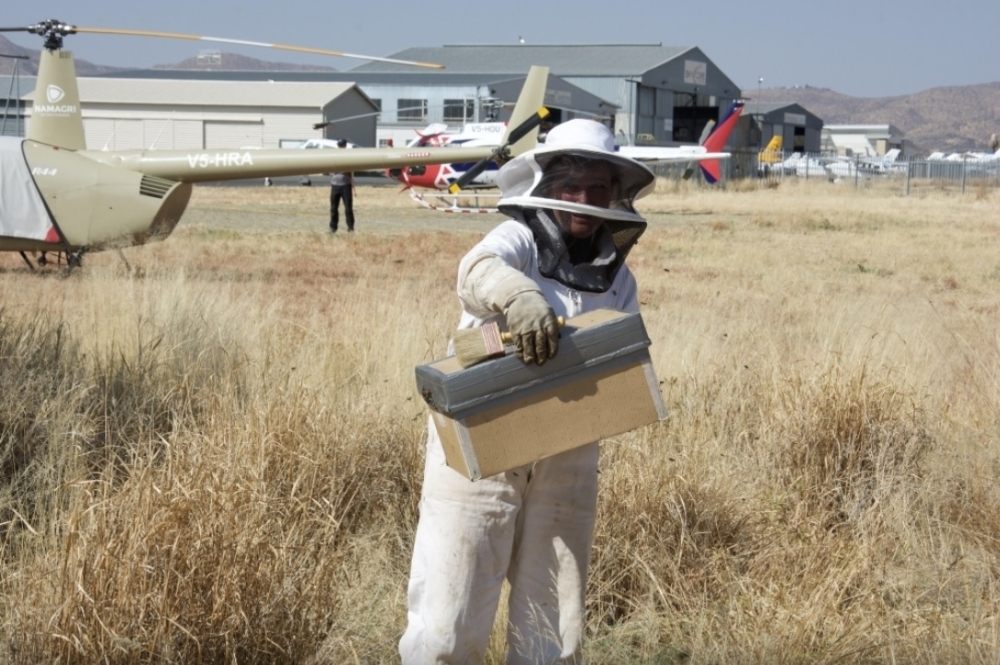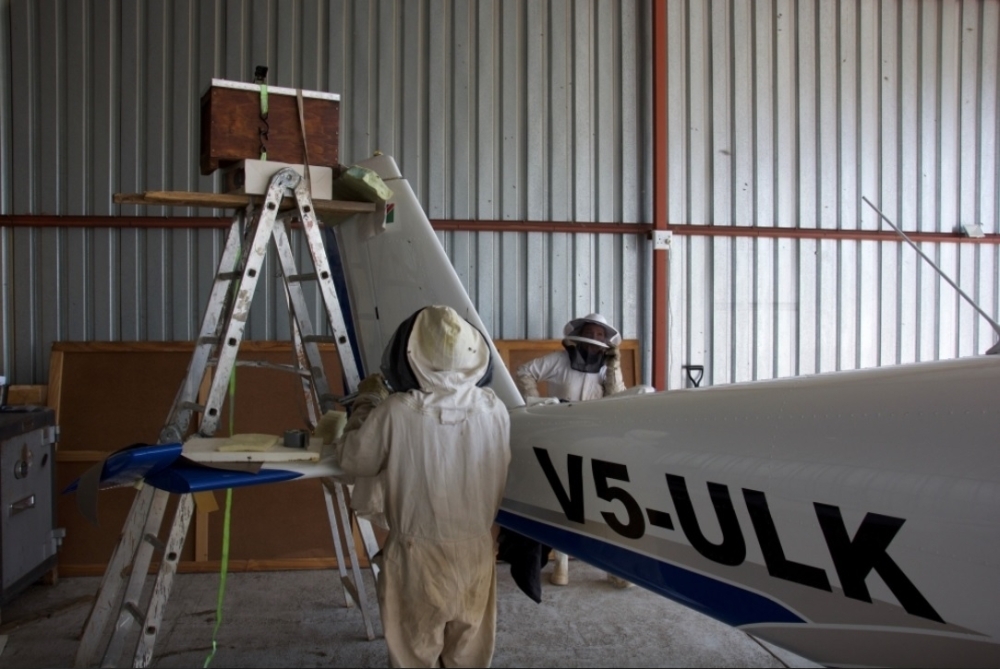Bees removed from airplane’s tail
A swarm of around 40 000 bees was removed from the tail of a light aircraft at Eros airport on Monday.Since the bees had made themselves at home in the unusual spot, the help and knowledge of beekeepers in Namibia and South Africa had to be called in and everyone was of the opinion that this was a unique situation.
The bees moved into the plane’s tail on Saturday.
The aircraft owner, Hilko Marschall, had parked the plane outside the hangar and it was while doing repairs that he noticed the bees. As they increased in number, he posted photos on the aviation community’s social media platforms.
“Within 25 minutes a swarm had arrived and began moving into the plane’s tail, into a difficult space to reach. We realised this could create probles as the bees moved through the panels to the cabin,” Gretchen Burmeister of the Beekeeping Association of Namibia said.
Reini Hoppe, a beekeeper, set up a beehive to see if the bees wouldn’t move out on their own accord, which, did not happen.
“This bee removal was challenging for several reasons including the risk for the bees, people and the swarm’s inaccessible location. Disassembling the tail would be extremely expensive with electrical and mechanical mechanisms that could be damaged. We couldn't see the bees or get to them, while they could move deeper into the wings. If you blow smoke into the tail which we would usually do, you cannot be 100% certain that small sparks will not fall – and that in the presence of highly flammable liquid.”
Furthermore, “the airport was not closed and people were constantly passing by. This combination of factors and the fact that we didn't want to kill the bees or leave anything behind that could hinder the aircraft's future functionality, along with the fact that we didn't want to damage the structure of a valuable aircraft, was unique,” Burmeister said.
Plan of action
During a group consultation, it was decided that if the bees had not moved away by Monday morning themselves, they should be removed and relocated before they start building wax structures.
Shortly after nine that morning, a team of beekeepers and experts started the process while the airport maintenance company helped to remove one panel so that a mechanic could look inside with a microscope to indicate the location of the swarm.
A trap box was built and beekeepers Burmeister and Manfred Gawaxab decided to systematically smoke out the bees so that they could climb out of the trap box placed above them. However, there were too many crevices and hiding places for the bees and they decided to use stronger and more smoke.
“The queen fled from the smoke and sat down on a branch about 50 meters away. Since the swarm was not yet established, they followed her,” Burmeister said. “We waited until they were on the tree behind the aircraft shed and the swarm was brushed into the trap box. When the queen was placed in the hive, the rest of the swarm followed. They were later moved in the Windhoek area to a place where there are already other beehives.” – [email protected]






